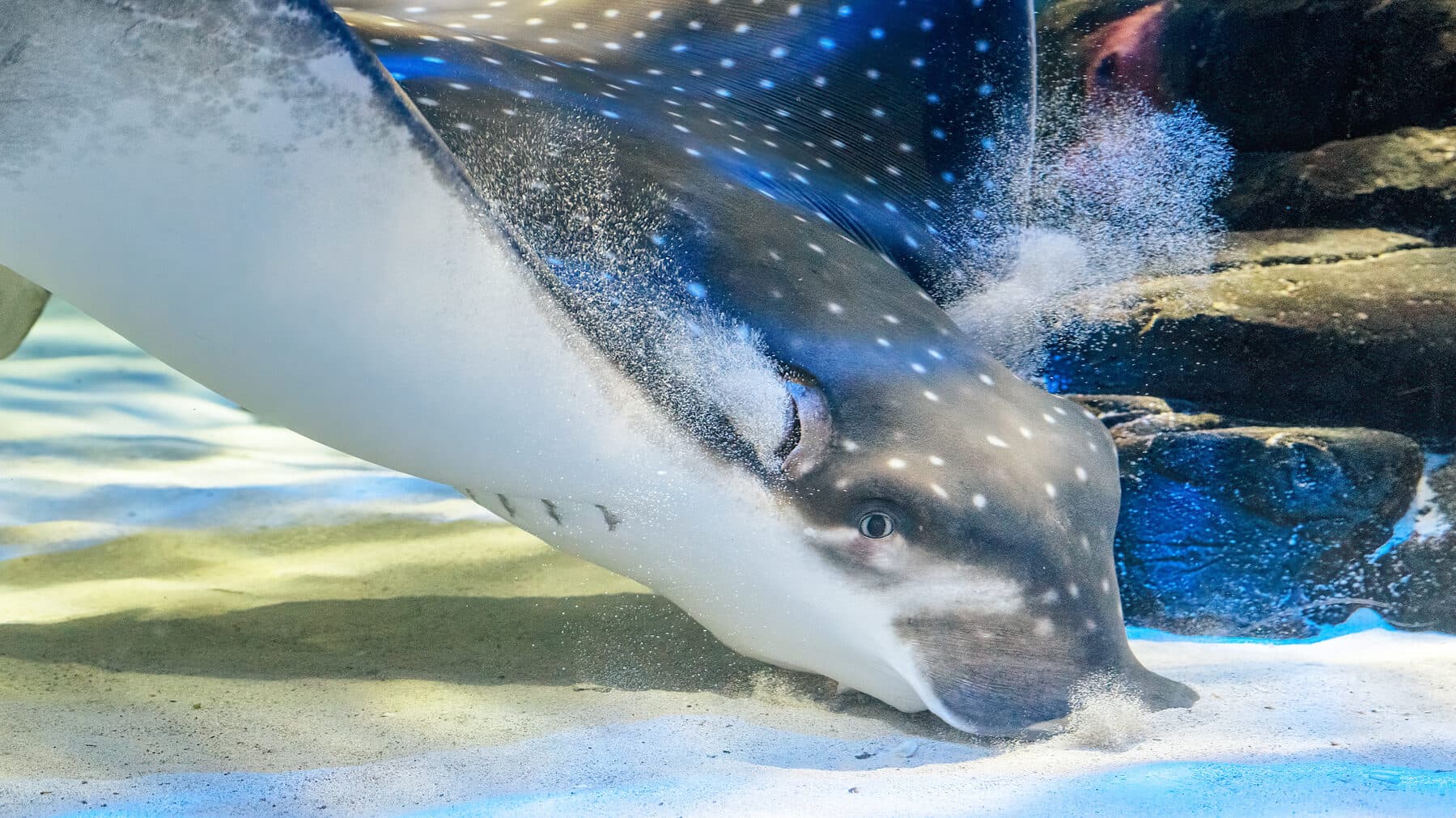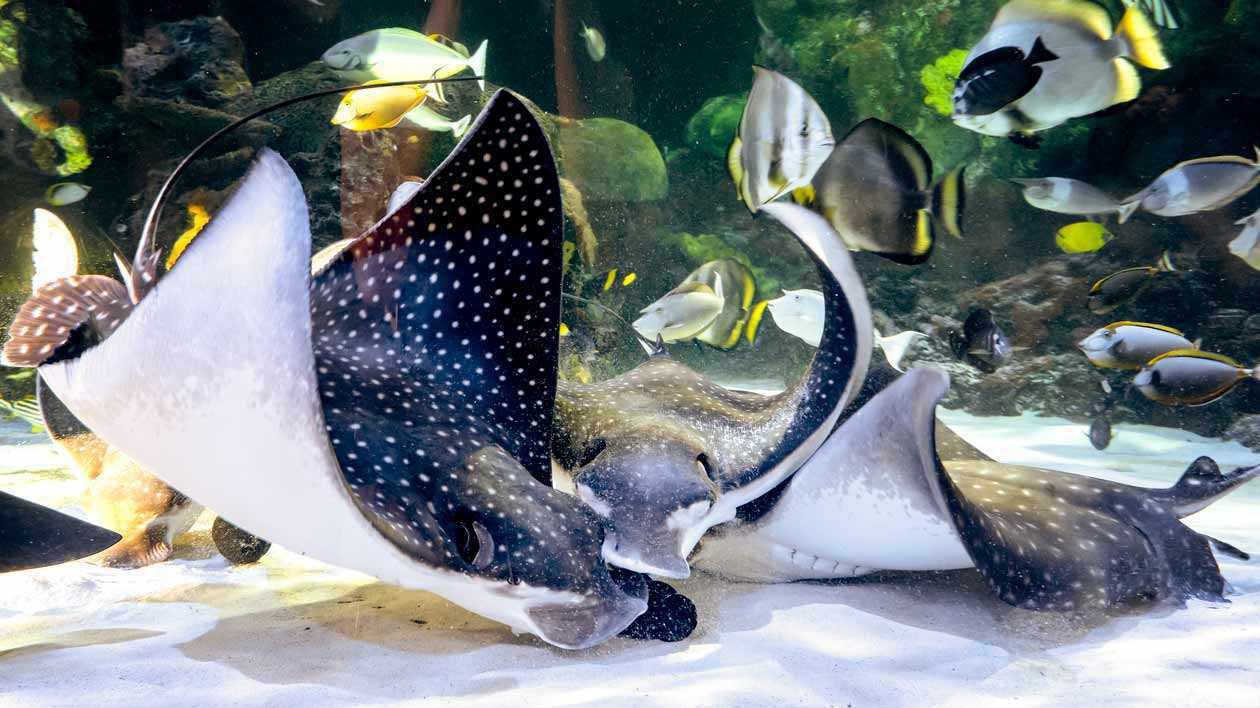Length: Over 16 feet
Weight: Over 500 pounds
Wingspan: Nearly 11 feet
Spotted eagle rays are one of the largest eagle rays, with only manta rays growing larger, and are black, dark gray, or dark blue with white bellies. They have venomous spines on their tail used for defense when they feel threatened. Similar to human fingerprints, individuals can be identified by the unique white rings or spots displayed across their dark backs. These rays have a large rostrum, a beak-like protrusion that they use for foraging for food along the ocean floor.
Diet
Spotted eagle rays spend a large portion of their days feeding on shrimp, prawns, crabs, octopuses, clams, and oysters. Their heads are specially designed to act like shovels, helping them to dig in the sand in search of a bite to eat.
Habitat
Spotted eagle rays are often associated with coral reef habitats and are considered to be a coastal species. They are found in warm shoreline waters worldwide but also have been observed out in deeper waters.
Reproductive Behavior
Spotted eagle rays reproduce via internal fertilization, but unlike mammals, the embryos are not attached to the mom via a placenta for in utero nourishment. Instead, they live off a yolk sac and once they are large enough to live on their own, they are birthed. Litters are usually only 1 to 4 pups.
Human Interaction
Like all eagle rays, spotted eagle rays are active swimmers and tend not to lie motionless on the seafloor. They are most active during high tide. Spotted eagle rays try to avoid interaction with people, and while considered fairly shy, there are reports of them inadvertently landing on an unsuspecting boater or fisherman.
Are they dangerous?
While they do have venomous barbs on their tails, like many other animals, spotted eagle rays only act aggressively if they feel threatened. Most often, they will swim away when encountering humans. In most cases, a sting from a ray is not lethal, though a direct hit to the heart or other important organ can lead to death.
Celebrations
Thankfully the spotted eagle ray is not yet considered endangered, and people in some areas are working to make sure this status remains. In Bermuda, in 2010, the spotted eagle ray was listed under the Bermuda Protected Species Act 2003. Anyone convicted of catching and/or killing an eagle ray will be fined and face prison time. Several AZA facilities, like the Virginia Aquarium, have observed successful births which gives hope and provides valuable information for conservation efforts.
Concerns
Worldwide, the populations are declining. Conservationists are working to monitor this species closely so they can determine what actions need to be taken to protect them. Their method of low birth rates (1-4 pups), slow maturation, and slow growth rate exacerbate conservation concerns. These factors contribute to why experts consider the spotted eagle ray to be a species “Near Threatened” with extinction. Additionally, while this animal is not directly targeted by commercial fishing, it is often a victim of unintentional capture in nets. The population is estimated to have declined between 50 and 70% in the last 30 years.



